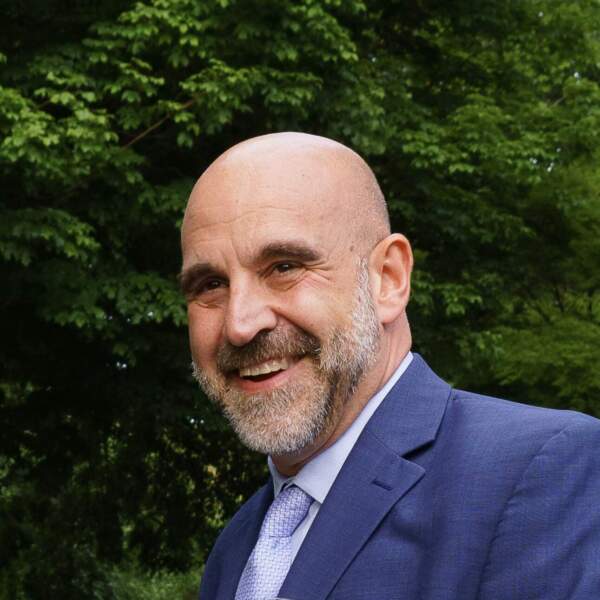Advertisement
Commentary
Philanthropy doesn’t always get it right. Let’s rethink how we give

Tomorrow is Giving Tuesday, when individuals around the world contribute to causes they believe in. Since its founding in 2012, it has grown into a global movement. In the United States alone, more than 20 million people collectively contributed over $3 billion to nonprofits in 2022 — more than four times the annual grantmaking of the Ford Foundation.
For those of us in philanthropy, it’s a day when the work we do is front and center in the public consciousness. For that reason, we’re using this Giving Tuesday as an opportunity to shine a light on our own sector. The truth is, philanthropy doesn't always get it right, and we have an opportunity to change our practice and live up to the ideals we espouse. That applies to foundations large and small, but also to everyone making individual contributions on Giving Tuesday.
First, a quick primer on how philanthropy has typically operated. The seeds of modern American philanthropy were sown from Gilded Age wealth. Turn-of-the-century industry titans like Andrew Carnegie and John D. Rockefeller started foundations as a way to put their stamp on the world, believing their success in business translated to a superior knowledge of how to improve society. Philanthropy was rooted in this paradigm — one where (predominately white) wealthy donors chose issues they cared about and prescribed solutions based on their beliefs about what ailed communities.
Modern philanthropy still carries the legacy of this approach. It has become so ingrained in the mindset of donors and grantees that it’s hard to break free, just as it's hard to escape the structural racism that pervades many aspects of society. Ask the leader of any nonprofit about their experience with funders, and they’ll tell you about a time when they had to contort their vision to fit a particular funder’s priorities. These stories are not anomalies — they are the norm.
Philanthropy was rooted in this paradigm — one where (predominately white) wealthy donors chose issues they cared about and prescribed solutions based on their beliefs about what ailed communities.
This old approach to philanthropy built a system where those who are closest to a community find it difficult to navigate the opaque world of philanthropy. It has left us with a profoundly inequitable nonprofit sector, one where Black and Latino nonprofit leaders currently receive only about 4% of philanthropic funding in the U.S., though they make up roughly 10% of nonprofit leadership nationwide, and more than a third of the top 20 racial equity grant recipients are organizations that were launched and driven by white business leaders.
How, then, do we fix this inequity?
Over the past several years, we’ve recognized in each other a shared purpose — to remake the world of philanthropy and reimagine the relationship between funder and grantee into a genuine partnership. And over the last three years, we have worked to implement this vision in the foundations we lead. It hasn’t been easy. Even though we come to this work with the intention of leaving philanthropy’s old way of doing business behind, we are still responsible for first acknowledging its presence and our own complicity as members of the philanthropic sector.
Advertisement
For others in philanthropy — whether you are a large foundation or an individual making a modest donation on Giving Tuesday, here are three lessons we’ve learned as we’ve worked to change our own practice:
- Start with the mindset that the organizations you’re investing in have a lot to teach you — not the other way around. It’s easy for funders to start from a place of privilege and power, given we hold access to the dollars that organizations need to sustain their work. Philanthropy needs to flip this mindset on its head. If you begin by assuming that those who are the closest to a community are more likely to know its needs, then you start to operate differently. For example, instead of prescribing grant metrics in a top-down way, ask your grantees how they would define success and design metrics together. After going through this process with grantees at the New Commonwealth Fund, one of them — who runs an arts organization in Lawrence — said it gave him “unreasonable confidence” to not compromise his approach and values, no matter what a funder offers. As an individual donor, you can take this mindset as well. Start with a community or issue you care about, and then go talk to organizations operating in this space about the solutions they believe are the right ones. Don’t come in with a heavy-handed approach.
- Trust that organizations will use your dollars wisely — don’t impose restrictions on how they spend it. Philanthropy’s traditional m.o. has been to give dollars to organizations with restrictions placed on how they can be used. For example, dollars can be used for a specific program, but not to pay the staff that keep that program alive. The data shows that this has manifested deep, structural racism in how nonprofits are funded; Black-led nonprofits have 76% less unrestricted net assets than white-led nonprofits. The New Commonwealth Fund has given unrestricted gifts since its founding in 2020, and the United Way recently made a seven-year commitment of more than $50 million in unrestricted gifts to organizations throughout Massachusetts. We hope others will follow suit. As an individual, you can choose to give to foundations who have made this commitment in their own giving, instead of those who haven’t.
- Make a sustained commitment to your values through your giving — don’t just follow the issue of the day. So much giving is motivated by the crisis in front of us. But for nonprofit leaders, it can be incredibly difficult to get a surge of funding in one year only to see it dry up in a year or two. We’ve seen this happen to organizations working toward racial equity, when billions were pledged by corporate America but haven’t yet been fulfilled. Instead, large foundations can commit to making multi-year gifts — and small donors can as well. This allows nonprofits to strategically plan for the long term, and also gives funders a deeper connection to the work.
As we approach Giving Tuesday, our message is twofold. First, to large-scale funders: We acknowledge that changing systems and practices that have been in place for generations is hard. But it is never too late to take steps toward a more equitable approach to giving. And to everyone else reading this piece: Remember that anyone who gives is a philanthropist. You have the power to give differently, to give in a way that respects leaders who are confronting challenges within communities you deeply care about.

